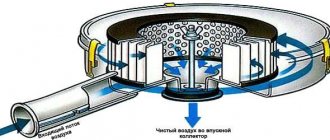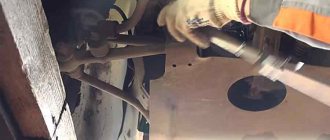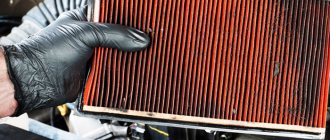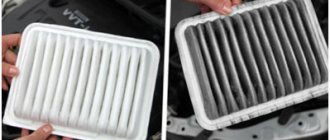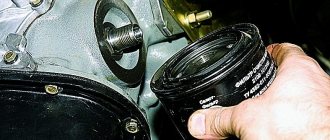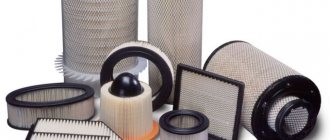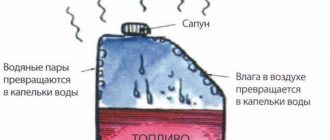Reports from Hell
Service technicians also know how to disable the catalytic reduction system for diesel engines with AdBlue injection (this is a liquid urea-based reagent used to reduce the content of nitrogen oxides in diesel exhaust gases). Sooner or later, its individual elements fail, and repairs are very expensive. Often the AdBlue neutralizer is not gutted. Structurally, it is similar to the oxidative one, that is, it does not clog. But at the insistence of the client, who still wants to play it safe, it is removed. There are no pitfalls in the operation.
Questions and answers
Why is interrupted self-cleaning dangerous?
In a single version - nothing. If the process takes a natural turn, then soon you will have to change the oil and force active regeneration. If you go to extremes, then one day the engine will stall and will not start.
How long do you need to drive to burn through the particulate filter?
Usually 50-70 km is enough. Sometimes even less. The best guide is not kilometers, but an extinguished lamp, if we are talking about pre-emergency mode, or the cessation of the emission of thick white smoke from the exhaust.
Burning or flushing: what to do in an emergency
Of course, not a single chemical comes close to standard soot burning products. Experienced drivers generally believe that this is money down the drain.
How many grams of soot are allowed for a diesel engine?
We are talking about an electronic counter that calculates the theoretical mass of solid particles inside the filter. There is no single standard; each car has its own threshold. We will use the Audi Q7 as an example, where:
- 40 g – active regeneration is necessary.
- 68 is the limit, upon reaching which even forced burning will not start.
- 56 g – the value at which forced burning ends.
It makes sense to reset the readings only after washing or replacing. The system cannot be fooled simply because the particulate particle counter is not the only value it is guided by, and a clogged particulate filter is not only an electronic limitation, but also a physical one (it is difficult for gases to escape).
Frequent burnouts after refueling at a gas station
There is only one reason for this: low-grade fuel with a high sulfur content. Dilute the remainder with high-quality diesel fuel and the symptoms will go away. Since this often happens on the way to vacation, find out in advance which gas station has the best diesel fuel in a particular region. In the reference article, we looked at decent options on a popular summer destination – the M4 highway.
What happens if you remove the cleaner from the exhaust system?
The diesel will smoke, 20-30 hp will be added, and the ride will become more dynamic. The damage is only caused to the environment. We hasten to warn you that the removal must be carried out competently - with flashing of the on-board electronics.
Conditions of a contract
When choosing a service station, always pay attention to the range of its work. Before you decide to remove the neutralizer, you must make a preliminary diagnosis. Very often, environmental errors or loss of dynamics are associated with completely different reasons. Therefore, it is important to do both steps in one service in order to have guarantees.
The cost of the work varies from vehicle to vehicle. The design of the exhaust system (the complexity of removing its elements) and the design of the engine control unit (the type of connection to it and the cost of calibration) contribute to it.
A fresh seam on the collector will not be noticeable for long. After a short time, the color of the repair area will merge with the overall color of the unit.
A fresh seam on the collector will not be noticeable for long. After a short time, the color of the repair area will merge with the overall color of the unit.
The average price tag for cutting out a “gasoline” neutralizer for middle-class cars is from 12,000 to 20,000 rubles. Removing a particulate filter is estimated at 14,000–40,000 rubles. This scatter is associated with different calibration costs. It will cost the most to eliminate the AdBlue system: from 30,000 to 70,000 rubles. In this case, work on the program is the most expensive. Most often, the master has to order calibrations externally.
As a specific example, let's look at the cost and nature of the work involved in cutting out the converter on a BMW E60 with a 2.5 petrol engine. This is a car from the American market, so you need to solder it directly to the engine brain board for flashing. In addition, the car is equipped with two catalytic converters, which are quite difficult to remove. Therefore, the work costs 26,000 rubles, of which 12 thousand are for reflashing.
The master sent the extracted program to his partners for calibration, since he does not have any developments for this car. After manipulations with the software, the environmental class changed from Euro‑4 to Euro‑2. Flame arrestors were installed in the neutralizer housings. The second oxygen sensors were completely turned off and plugs were installed instead.
A 2005 car with a mileage of 200,000 km initially arrived with a bunch of errors not directly related to the converter. At the same time, the car lost a lot of dynamics. The cutting out of neutralizers began only after confirmation of the diagnosis made in a third-party service. During the work, it turned out that the ecofilter honeycombs had melted significantly.
Diesel particulate filter clogged: signs and consequences
The role of the soot is such that it only takes power away from the engine. The fact is that soot constantly accumulates inside it, creating resistance to the movement of exhaust gases. You won’t notice this in the city, but on the highway a car with a barely filled filter will accelerate less readily. However, driving on a suburban highway is very useful for a diesel engine, we will explain why later.
One way or another, a slight drop in traction is difficult to notice. It is much easier and more useful to pay attention to the instrument panel, where a special lamp or combination of LEDs will outline the severity of the problem. The exact answer to what this or that icon means can only be found in the instructions for the machine. As an example, we suggest considering the algorithm for signaling problems with DPF on VAG cars:
- DPF icon. The filter is almost full, there have been more than one unsuccessful regeneration, but there is still a chance to burn off the soot using standard means. As soon as the icon lights up, immediately drive onto the highway. We'll tell you what's what and why.
- Check + DPF. A sure sign that the soot hole is clogged. The computer goes into emergency mode, leaving the owner with the only option - to burn off the soot using a special mode.
Instrument alerts duplicate real things, such as fuel consumption, engine oil level, and response to the gas pedal. For example, the following signs help to navigate the impending failure of the particulate filter:
- Average fuel consumption per 100 km suddenly increased by 1-2 liters.
- The oil level in the engine has increased as a result of diesel fuel getting into the crankcase.
There is only one explanation for these events - unsuccessful regeneration (burning off soot using standard means). The purpose of burning is to increase the temperature in the particulate filter so that the soot burns out (converts into carbon dioxide) and the matrix channels become free again. They increase this very temperature mainly due to post-injection of fuel, so that the diesel fuel burns out in the “soot”. If you do not follow the manufacturer's instructions regarding the driving mode during the regenerating event, you will not get a successful result. Attempts at burning will be repeated often, which will ultimately lead to the things mentioned - an increase in diesel fuel consumption and oil level.
We recommend abandoning the idea of letting everything take its course. When the particulate filter is almost clogged, the car does not behave in the best way, because emergency mode means continuous restrictions on speed and current fuel consumption. If this fact does not stop you, then the result of “ignoring” the emergency alert will work in any case: when the purifier is completely clogged, the car stalls and does not start, or starts and immediately stops.
Self-deception
The trick for the oxygen sensor is a spacer for the sensor, which has its own small neutralizer. It is screwed into the body of the gutted converter, and the lambda probe produces an acceptable signal for the “brains” of the engine. This is in theory.
Alas, such deceptions are made mainly from second-class raw materials. Therefore, you should not count on the fact that the precious metals contained in them will be enough for the normal operation of the neutralizer crumbs. This is most relevant for modern cars of the Euro 5 class and higher: on them, the converter error most often lights up immediately after gutting the filter and installing a blende for the second oxygen sensor. Although things are no better with Euro-4 class cars.
DPF service life
The main problem for particulate filters is the large amount of soot in the exhaust gases. Problems with mixture formation (fuel overfilling or insufficient air) lead to an increase in the amount of soot.
There can be many reasons: faulty fuel equipment, problems in the air supply system, turbocharging problems, etc. The quality of the diesel fuel also affects the smokiness of the exhaust.
One way or another, even under ideal conditions at high mileage (from 200-250 thousand km), the particulate filter will gradually become clogged and the problem will need to be solved. The official solution to this situation is to replace the particulate filter. Of course, this solution is the most correct, but very expensive.
For this reason, car owners actively use the following methods:
- installation of analogue substitutes or homemade solutions. This method is risky and does not pay off, since cheap analogues or homemade substitutes can cause a fire. Let us also add that even after installing such a “filter,” regeneration errors will occur, since the sensors cannot interact normally with analogues.
- Removing the particulate filter. In this case, you can completely get rid of the problem with this filter. The only drawback is that an unpleasant exhaust smell will appear and the toxicity of exhaust gases will increase.
Taking into account the fact that at the moment the environment in the CIS countries is not given due attention, car owners turn a blind eye to the problem and prefer to remove particulate filters and catalysts.
Moidodyr
A clogged particulate filter can be washed. However, this helps when soot is deposited in the honeycombs.
The filter is dismantled and its insides are washed several times with water using a high-pressure apparatus. Next, a cleaning agent is poured into it (active foam or even dishwashing detergent will do) and left to soak for half a day. After repeated rinsing with water, the unit is reinstalled on the car. Finally, the filter regeneration process (burning off soot) is forcibly started. Such a comprehensive flushing in most cases saves an expensive unit.
But if the filter is clogged with sulfur and paraffins, which are still in abundance in our diesel fuel, washing is useless. No chemical can completely dissolve these deposits.
We thank the AutoChip service for assistance in preparing the material.
Removing the neutralizer: benefits, harm, cost
An excursion into theory: what is a particulate filter
The task of any filter is to catch something. From the prefix “anti-particulate” it is clear that the test subject retains particles of soot that are formed as a result of incomplete combustion of diesel fuel.
What does it look like
The design is a ceramic matrix consisting of a large number of blind perforated channels. This expensive arrangement is located in a round or oval can of impressive size.
As the exhaust gases move, soot particles remain in these same channels, since they do not pass through the fine perforations. It is logical to assume that such a sump will quickly clog if the accumulated soot is not removed. Let us note right away that it is removed, or rather burned out, and a special engine operating mode has even been developed for this.
Where is it?
The particulate filter is located in the exhaust tract, not far from the exhaust manifold. If there is a catalyst, then the “soot” is located immediately behind it. Sometimes they are combined into one housing so that the sifted soot is as close to the engine as possible. This arrangement makes it possible to heat the insides of the particulate filter element to high temperatures - condition No. 1 to ensure soot burning.
How to find out if...
This question is usually asked by owners of used cars. You can find out if your car has a particulate filter using diagnostic equipment. When it is removed, the model for monitoring and analyzing the soot filling of the filter element is disabled. Since the factory can is usually left in place, and only the matrix is amputated, the trace of the intervention is clearly visible - this is a closed weld in the wrong place.
DPF, FAP - what is it?
If we decipher these abbreviations, we get the translation of the phrase “particulate filter” in English transcription (Diesel Particulate Filter) and in French (Filtre a Particules). In fact, the difference between them lies in the process of organizing regeneration (soot burning mode), which we will talk about in the corresponding section.
Do-it-yourself diesel particulate filter cleaning
The particulate filter of a diesel engine (as well as a gasoline engine) is washed in 2 ways:
- without dismantling the device;
- after dismantling.
To clean the unit yourself, remove it. The procedure is quite troublesome - it takes 8 hours. We remove the filter device and fill its body with flushing agent. Cleaning liquid is usually sold in 5 liter canisters. One procedure takes up to 4 liters. We pour the product through the hose that comes with the canister.
When filling the filter, the substance begins to dissolve soot deposits. The desired effect can be expected after the liquid has been inside the case for 8 hours. Do not neglect to read the instructions before using the product, as it describes the dosage.
After 8 hours, the soot deposits are separated and removed with a pressurized water jet. Then the soot is put in place.
Some drivers think that chemical cleaners can be dangerous for the catalyst, but this is not the case. Modern additives contain safe elements that only destroy soot.
Be aware of the platinum layer covering the inside of the soot. It is quite fragile, and excessive exposure to it is unacceptable.
Washing the particulate filter without dismantling
The work will be completed faster if you do not remove the device. This is made possible thanks to a temperature sensor. After unscrewing it, a hole appears through which you can pour flushing fluid.
Do not forget about safety precautions - remember that the liquid can ignite. The product is applied into the hole using a gun or probe.
Here's how to proceed:
- We warm up the engine.
- Pour a liter of liquid into the hole and leave for 15 minutes.
- We connect the gun to the probe.
- We insert the probe into the hole. Spraying the liquid takes 10 minutes. Then we stop the procedure for 10 minutes, then resume.
There should be 4 or 5 ten-minute cycles (cleaning-stop). For better spraying of the composition, it is recommended to scroll and move the probe back and forth during the cleaning process.
After the procedures, fill the system with rinse aid (0.5 liters), which is needed to neutralize the remaining active substance. We rinse with a sprayer at the same time intervals.
Upon completion of work, screw the sensor into place and warm up the engine to operating temperature. Then we start the regeneration process, which will destroy the remaining soot deposits. The duration of the process is 15 minutes. Natural soot burning begins after the engine has been running at medium speed for some time (15-20 minutes).
The process may not start naturally due to problems with the electronics. In this case, you need to run it yourself using a diagnostic scanner.
Cleaning methods have their pros and cons, but it is better to dismantle the device. And this does not depend on what power unit is in the car - Diesel or gasoline engine.
Forced regeneration and manual cleaning
If the filter has been used in unfavorable conditions, thereby becoming clogged, it should not be used. It will simply destroy the system and the engine, which will result in a major overhaul. Therefore, if the blockage is complete, it is necessary to undergo a forced regeneration procedure.
Forced regeneration can be triggered by special equipment, often found in service centers. It allows you to quickly remove the blockage by connecting the cleaning system. However, it is not always possible to enable it. In cases where the filter is filled above normal, it will not be possible to turn on the cleaning system.
If this happens, then washing with special means will help. Often it allows you to eliminate most of the soot, after which regeneration can be activated.
Washing is carried out using two methods:
- without removing the element;
- complete washing and removal.
In the first case, you need to take a spray gun and a flexible tube, as well as a filter cleaning product. For such tasks, TUNAP MP 131 fluid is suitable. A pressure source is also required - a compressor. The filter is accessed through a previously removed temperature or pressure sensor. It is necessary to thoroughly clean this element, the approximate consumption for one cleaning is up to a liter of liquid.
Next, you need to remove the liquid with TUNAP MP 132 concentrate. After this, the cleaning procedure is completed, you need to return the sensor to its place and regenerate the filter using standard methods. If the procedure does not help, then it is necessary to carry out a complete wash and remove the element.
The second method is to completely remove the filter and wash it. First you need to remove the filter from the system and open it. Next, it must be washed with special products like DPF Cleaner. They remove soot and oil residues, making them easily removed under water pressure. Such cleaning agents are washed off with water. Cleaning can be supplemented with special cleaning products such as PRO-TEC DPFCatalyst Cleaner. However, this depends on the situation.
Advice! Using a compressor can improve filter cleaning efficiency. It is enough just to push the cleaning agent through with compressed air.
After completing the procedure, you need to dry the filter and install it in the car. Next, you should check its condition and start regular regeneration. But it is worth considering that flushing is not always able to help against blockages. If the available methods do not help, you will have to purchase a replacement.
Important! Gloves must be worn when using cleaning agents. It is important to remember that these are aggressive substances that can harm the skin. It is recommended to replace the filter after passing 180 thousand kilometers
This point can be delayed through cleaning and regeneration, but this element cannot serve forever, and using a clogged or bad filter will lead to soot getting into the system, which will certainly result in high repair costs
It is recommended to replace the filter after passing 180 thousand kilometers. This point can be delayed through cleaning and regeneration, but this element cannot serve forever, and using a clogged or bad filter will lead to soot getting into the system, which will certainly result in high repair costs.
And for a better understanding of the effectiveness of washing particulate filters, it is recommended to watch this video. Here the clogged filter segment was cleaned using Luffe. The stages of the procedure and the effectiveness of such washing are clearly shown:
- The starter relay clicks but the starter does not turn over.
- How to change the generator on a Priora
- Replacing the tension roller of the generator belt on a Priora
- How does a mini-wash work?
